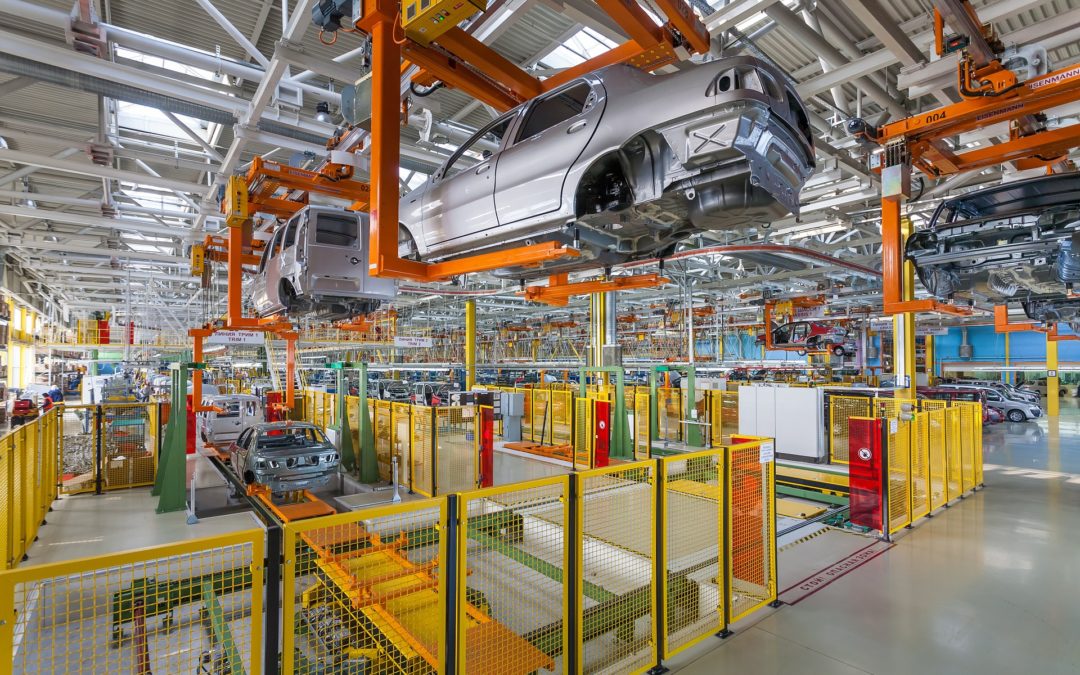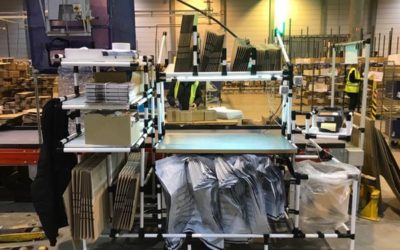Successful lean system integration comes from connecting all elements of lean (principles, concepts, tools) across every dimension of your operation (space, time, people, financial). Although sometimes a principle is easy to understand on the surface, it is not always easy to connect it to your actual environment to understand the purpose and the steps towards making it work. These principles are universal to any environment and are supported by hundreds of successful companies across all industries. One of these principles is one piece flow. Here’s what it is and how lean solutions can help you achieve it.
What is one piece flow?
Imagine you’re in the market for a new pair of shoes. There’s a certain brand that you like, so you go to their store. They pull up your order history, ask you if anything has changed in your lifestyle since your last purchase, and scan your foot with a 3D scanner to build an updated model. You select your favorite shoe model and they pull it up in their software. You then customize it with various colors, material choices, add your initials, favorite phrase, and they use their proprietary model to mold the shoe to your foot. They hit the “Print” button and a 3D printer goes to work. You have a refreshment, watch a bit of the basketball game, and 30 minutes later your shoes are ready. They are made for exactly how you will use them, customized with your preferences, built on demand, and cost less than the shoes you buy today. Now imagine what the process of making and buying a new pair of shoes is right now. The first is one piece flow, the second is reality. The difference between the two is the fun work of connecting a principle, in fact many principles, together with concepts and tools to improve your system. It also illustrates the dynamic power of one piece flow and why the principle is so important to a company, not just a plant or production operation.
Why does one piece flow matter?
Any discussion of one piece flow must start with the customer. Yes, all of the aspects about reduced lead time, improved quality, reduced inventory, reduced space, etc matter but they are all secondary to the customer. Looking outside to understand customer needs and demand is the first insight into the benefits you can get with one piece flow that are not immediately obvious just by looking inside at your own operation. Once you combine a better understanding of customer demand with the principle of once piece flow, you start to see the connections with other principles and concepts like pull, mixed and leveled production, standard work, and quick changeovers. One piece flow is a principle that helps put many other ideas into context.
How is one piece flow attained?
Start with an analysis to build a visual diagram of your material and information flow. This is a visual map of the frequency, content, and way of material and information flowing into, through, and out of your operation. One of the key outcomes from this visual is a clear understanding of whether you have a system based on push (batch) or pull (flow) or a mix of the two.
A key phrase I’m learning from my daughter’s swim lessons is “reach and pull” to describe the freestyle stroke. To move yourself through the water effectively, you reach your arm and pull back with your open hand. You don’t start with an open hand and “push and reach”. Production works the same way. No matter what your facility layout, an operation using pull and flow will be more effective than an operation using push and reach. In the pull system, products are pulled through the system to the customer to fulfill the customer’s demand, rather than pushing products through the system to meet anticipated demands which may be inaccurate and lead to overproduction. When Lebron James leaves the Cavaliers to go to the Lakers, one piece flow vs. batch production can mean a world of difference in obsolete inventory and reaction time to produce the new demand.
Where do lean solutions come in?
Lean solutions can help you get closer to one piece flow by keeping raw materials and work in process inventory moving once you have the processes in place to function effectively, and to support continuous improvement. Implementing cart systems allows for the movement of smaller quantities of more parts at the same time easily and effectively in a way that forklifts and boxes on pallets don’t. Flow racks help you flow the inventory, first in, first out (FIFO) to the next process or operator on the line, cutting down on the wasted time and effort of packing and repacking. Standard work-in-process inventory can be supported and visually validated by custom lean solutions in a way that catalog equipment never could with extensive, expensive modification. The opportunities to deploy lean solutions to help improve your system are endless.
Geolean provides lean integration as well as custom lean solutions that enable lean operations and help achieve one piece flow production. Contact us today to find out how our solutions can work for you.
To learn more about one piece flow, check out a previous Geolean blog, One Piece Flow Everything, Everywhere.



